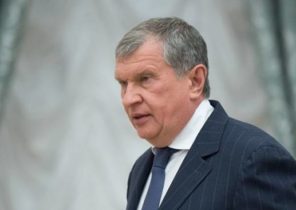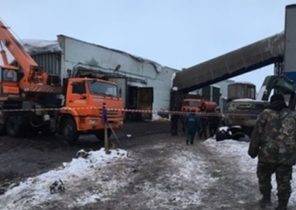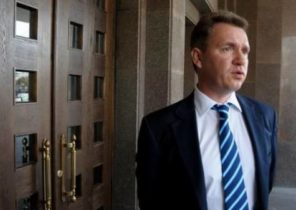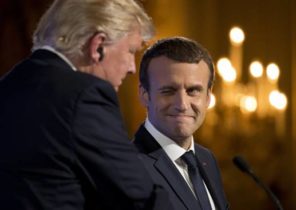Ambassador of Kazakhstan in Ankara Abzal of Saparbekuly written for Anadolu Agency article about the role of Nazarbayev in the country’s history.
In the XX century in different regions of the world there have been a number of modernization leaps. First wave of “Asian tigers” in the 1970-ies, then the success of China, the development of the countries of Central and Eastern Europe in the 2000s years, the processes of modernization in Brazil, Indonesia, Mexico and other countries in our days. These examples show how the nation was able to overcome the challenges of historical development, to rise to a higher position in the world hierarchy and radically update their state.
Kazakhstan started modernization path in the 1990-ies. The revival of our country and the leap forward came at a difficult historical period of the 1990s. This was a period of important developments in the field of international security, in energy and oil markets, as well as the formation of a new region called Eurasia. Kazakhstan was in the midst of these events, and in the center of the new region. It was a time of uncertainty and global turbulence, when the international political system that existed for over 70 years, fell sharply, as global players look for a suitable format for dialogue and cooperation and as-yet-unknown conditions. Formation of Kazakhstan as a state occurred in the “boiling” of the international situation.
Today can you imagine what would be the path of development of independent Kazakhstan. However, the identity of the first leader of the country, obviously, has been a major factor in the Republic’s history. Not seen that one person can change the course of history. Features such as the ability to take responsibility, have a clear point of view about the development of the country and be able to defend inherent in the people who run the country in the crucial turning points of history. In this regard, the role of Nursultan Nazarbayev in Kazakhstan’s history can be compared to the role played in the development of their countries, Mustafa Kemal Ataturk in Turkey, Charles de Gaulle in France, Mahathir Mohamad in Malaysia, Lee Kuan yew in Singapore, Deng Xiaoping in China. Nazarbayev, elected by the people as President 1 December 1991, took on a whole load of problems of his state, which, in his own words, “stood at the brink.”
Position of Kazakhstan on the eve of the collapse of the Soviet Union was quite serious. According to statistics, in the Soviet Union, which itself lagged behind developed countries in economic and technological relations, Kazakhstan held the last lines in these two areas. Frankly, during Soviet times, Kazakhstan was assigned the role of agrarian and raw materials appendage. Therefore, after the collapse of the Soviet Union the country was waiting for a difficult period. First of all, Kazakhstan was in an unfavorable geographical position, being located in the interior of the continent between the major powers such as Russia and China, and the unstable South, away from international waters. This geographical position was created and geopolitical threats, and economic hardship. In addition to this, the demographic structure of the country was also fraught with certain risks.
With the collapse of the Soviet Union economic situation in Kazakhstan has become worse. In the period from 1990 to 1994, industrial production in Kazakhstan dropped by half, in agriculture, a decline of almost a third, while transport fell by two thirds. The work of industrial giants in the coal, mining and other sectors stopped. Unemployment has increased, the mass economic migration. In these circumstances, Kazakhstan had to overcome an inefficient economic model that prevailed in the USSR. In a country that wanted to move to a market economy, remained archaic mechanisms of the organization of state institutions. In a society consisting of more than 130 ethnic groups and 30 religious denominations, it was important to maintain peace and harmony. And in foreign policy we were supposed to find their place in the world community.
Through all these thorns young Kazakhstan was held under the leadership of its first President. The difficulties and challenges of the first years were successfully overcome. A crisis turned into opportunity. The leader is the founder of Kazakhstan responded in a timely and correct decisions and managed to bring the country out of crisis to a new level of development.
Nazarbayev is actively interested in the advanced world experience of development, deeply studied the history of successful Nations, considered as a sample path of development of Japan, South Korea, Malaysia and China. However, it should be noted that Kazakhstan has never copied foreign models of development. Neither Asian nor European nor the American model wouldn’t fit Kazakhstan to the fullest. Because these models were applied in different political, social and economic conditions in different historical periods and in different States. Defining the universal principles of the global experience, Nazarbayev was able to skillfully apply them to national conditions and generate a special one for Kazakhstan model of effective reform, development and management.
In the early 1990-ies, Nursultan Nazarbayev, has developed a program of reforming all spheres of national development and have successfully implemented a national modernization. Nazarbayev presented his formula development: “first economy, then politics”. In other words, for the development of democratic institutions, one first needs to pursue economic development. Today this experience, known as the “model of Nazarbayev” or “Kazakhstan way”. The basis of this model is a deliberate state building when carrying out gradual reforms. To sum up 30 years of development history of Kazakhstan, the efforts of the first President of the country can be considered in three main stages of reform and development.
The first phase of modernization
In the early 1990-ies started the first modernization of Kazakhstan. The task of this period was to restructure the system of state management, form the foundations of a market economy and to integrate into the world community. During this period, Kazakhstan implemented the “triple transit” in the economic, social and political spheres. Kazakhstan has chosen democracy as a model of political development of the state. On the basis of the new Constitution in 1995, was founded as a political system with separation of Executive, legislative and judicial powers, laid the Foundation of a legal state. There was a deep economic transformation and the key mechanisms of a market economy. Kazakhstan managed to ensure stability in the face of uncertainty and to preserve ethnic and religious harmony in the society.
Kazakhstan declared itself as about the state, focused on peaceful development, and refused inherited from the USSR the fourth largest nuclear Arsenal. Young country established diplomatic relations with most countries of the world, became recognized on the international stage member of the world community.
During this period, Kazakhstan has made a surprise move and has developed a strategy for long-term development of the state. In 1997 Nursultan Nazarbayev presented the Strategy of Kazakhstan development till 2030. While post-Soviet countries were busy with the solution of urgent social, economic and political issues that faced them, the first President of Kazakhstan called on his country to look beyond the horizon of three decades.
The second stage of modernization
The second modernization of Kazakhstan began in the late 1990-ies and ended in mid-2010 years. During this period, has already established itself as the government of Kazakhstan, which has learned to stand on his feet, began to reap the fruits of their arduous efforts and reforms of the early 1990-ies. Under the leadership of President Nursultan Nazarbayev put the economy on a sustainable growth path, the country has a modern system of state institutions and the middle class. The reforms of the welfare of the society increased. While in the beginning 1990-x years GDP per capita was 700 dollars, in 2013 this figure reached 12 thousand dollars. In this regard, the world Bank has included Kazakhstan in the number of countries with average income level. Of the two world crises of 1998 and 2008-2009, Kazakhstan came out without significant losses. It showed the economic power of the young state and confirmed the vitality of its state structure.
Another significant success of Kazakhstan in the period of second modernization was the transfer of the state capital (which now bears the name of the first President, Nur-Sultan). The new capital has decided a number of strategic objectives of the state development and became a symbol of a new historical epoch of our country. In 2012, Kazakhstan was included into number of 50 most competitive countries of the world. In those same years, Nursultan Nazarbayev, presented the Strategy of development of Kazakhstan till 2050, which has a goal for several decades to enter the top 30 most developed countries of the world.
The third phase of modernization
In 2017, Nazarbayev announced the third upgrade. By that time Kazakhstan has already shown its growth potential. Thanks to the policy of Nursultan Nazarbayev, Kazakhstan’s GDP grew from $ 22 billion to 184 billion dollars. Efforts to improve conditions for business activity have resulted in the ranking of ease of doing business world Bank (Doing Business) the country has risen to 86-th place in 2005 on the 25-th line in 2019.
To achieve the new development goals needed to create a professional government, accountable to the public. Among the priorities of the new period — the effective development of the economy, attracting foreign investment, innovation, industrialization, social modernization, the preservation of the unity of the people. National development in this period is based on the development of human capital in the framework of the special program “janguru Ruhani” (spiritual upgrade).
Three stages of modernization, the objectives of which are complementary, form a complete process of renewal and development. The steady state structure and the strong presidential system has allowed to implement reforms in the country. In General, the main result of this process is that modern Kazakhstan has long left behind the stage of the struggle for survival of the 1990-ies and has entered the stage of global competition for the special place among the most developed countries.
Thanks to the balanced foreign policy of Nazarbayev, which is determined by the concept of “multi-vector”, was the safety of Kazakhstan, and the country became a respected member of the international community. Most of the proposed first President’s ideas and initiatives in the international arena was implemented. Kazakhstan became one of the key countries in the sphere of global nuclear security, has reached a number of results in peacekeeping policy and the settlement of the conflict over Nagorno-Karabakh, the Iranian nuclear crisis, the Ukraine, Syria and other countries. Peace-loving policy of Kazakhstan contributed to the election of the country to chair the Organization for security and cooperation in Europe (OSCE), Shanghai cooperation organization (SCO), the organization of Islamic cooperation (OIC), a non-permanent member of the UN Security Council in 2017-2019. On the basis of the Eurasian ideas was created by Nazarbayev, the Eurasian economic Union. Kazakhstan joined the world trade organization (WTO) and through the implementation of major infrastructure projects became a Central country from the point of view of transport and trade corridors between East and West.
Thus, as a result of three stages of modernization under the leadership of Nazarbayev, Kazakhstan has managed to make a kind of “time jump”. Or, in other words, to move from a politico-historical era to another, from one economic structure to another. This model serves as an example for our entire region. So these days, when we celebrate the 80th anniversary of Nursultan Nazarbayev, the architect of Kazakhstan’s way of development, not only the people of Kazakhstan but of the entire Turkic world wants a wise leader of health and longevity.







